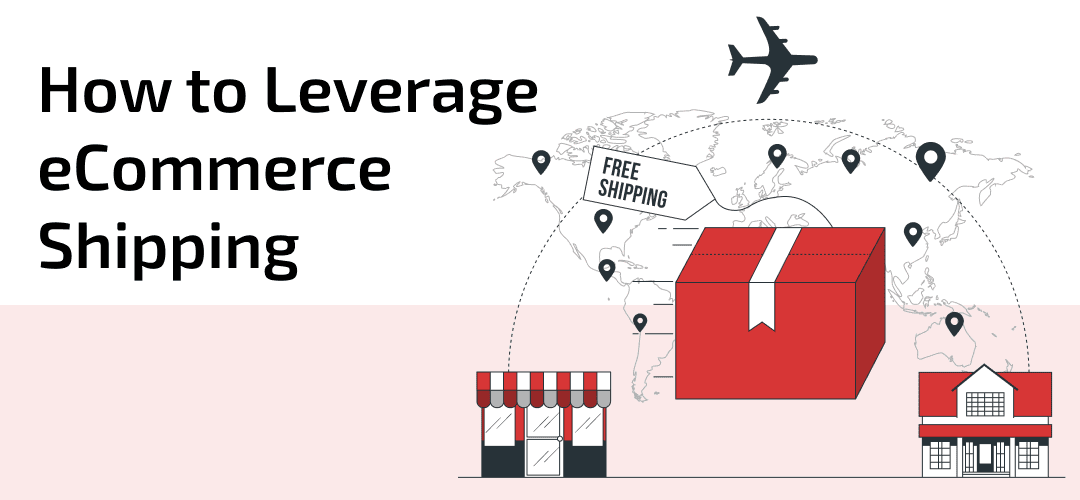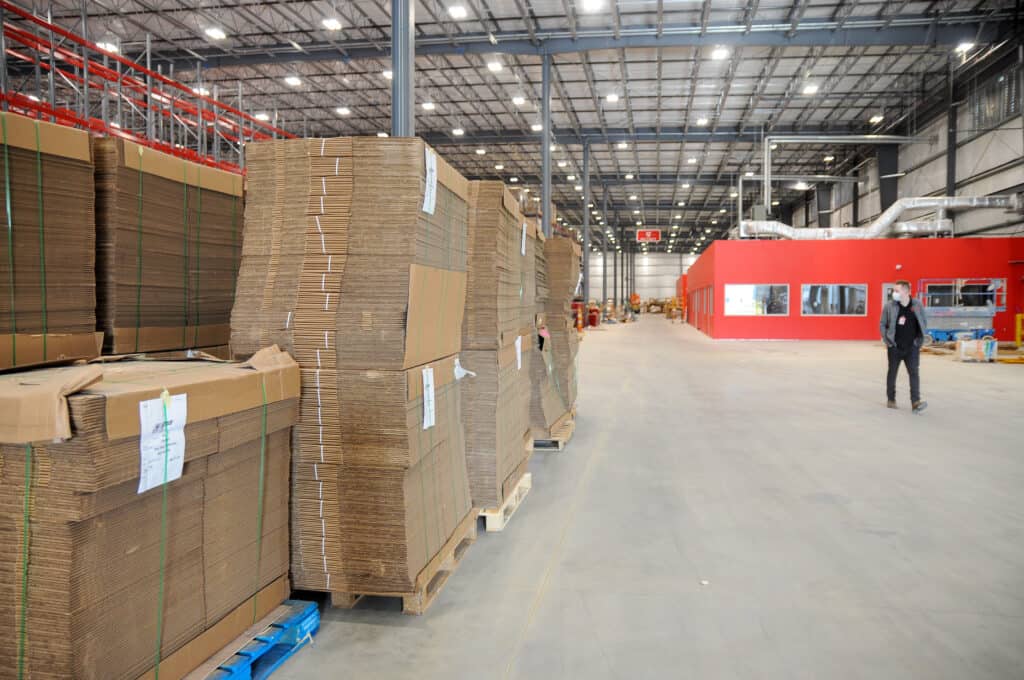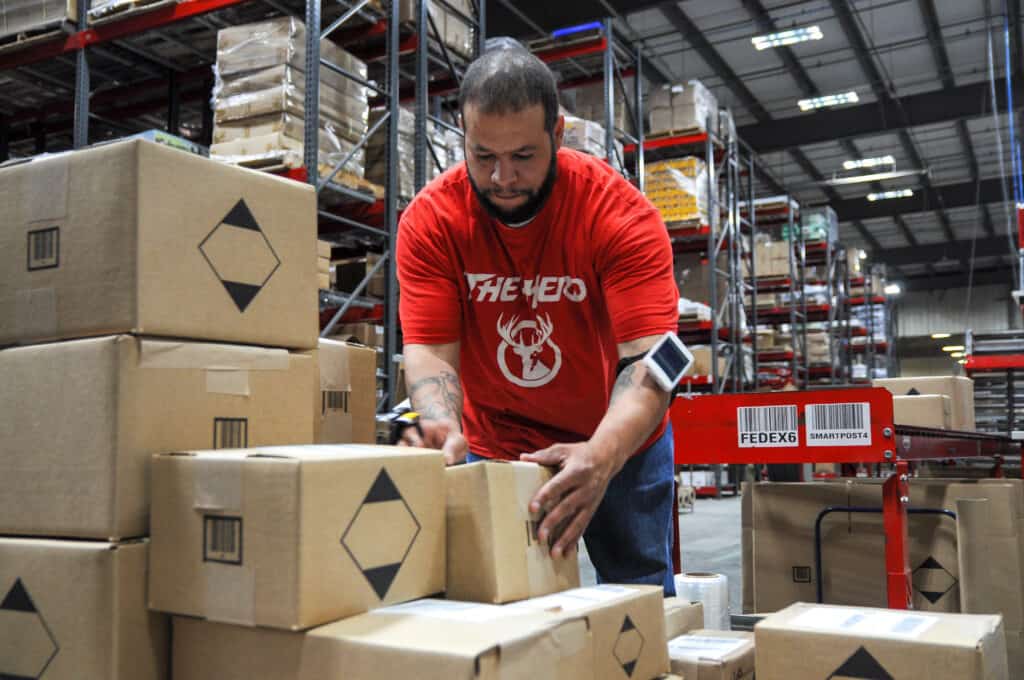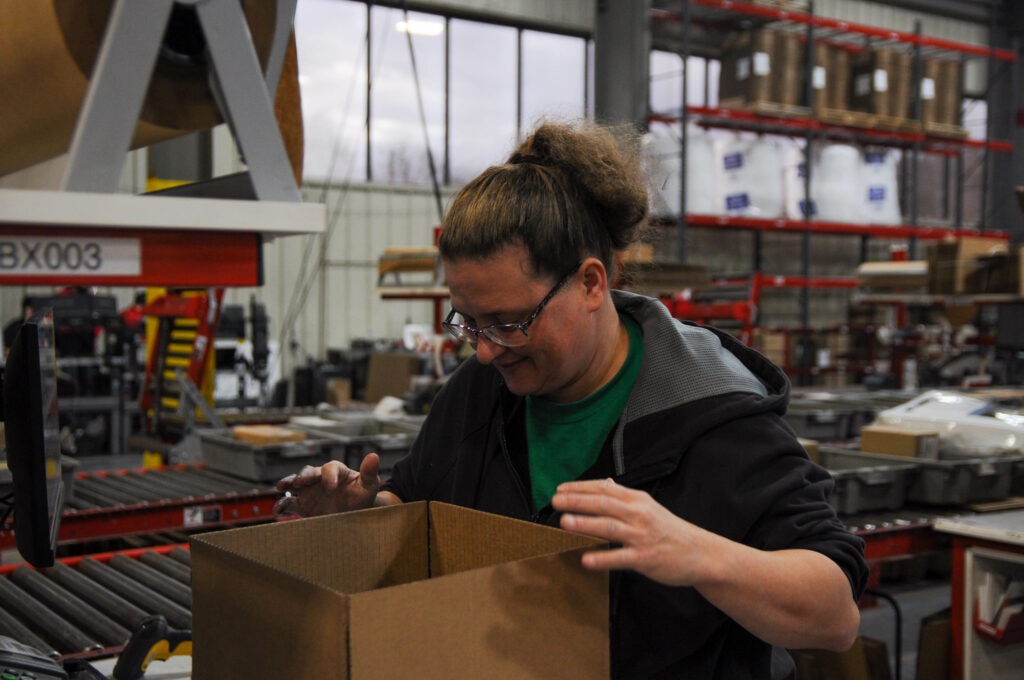
The advancement in technology, availability of multiple payment options, and growth of marketplaces to sell online - are all big factors why the eCommerce market size is growing faster than ever.
According to Grand View Research, the global eCommerce market size is expected to grow at a compound annual growth rate (CAGR) of 14.7% from 2020 to 2027. The research suggests that the main driving factor is the growing use of smartphones and the development of 4G and 5G technology.
The eCommerce market is more competitive than ever, and brands need to do their best to attract and keep their customers.
7 ways to leverage eCommerce shipping for greater growth in 2023
Online merchants have to provide the best user experience to their buyers. Just one mistake can mean the customer can think about finding a new supplier.
This is why businesses must create top-notch eCommerce fulfillment strategies. Keep reading and discover what you can do to stay ahead of the competition in the years to come - just by leveraging your shipping.
1. Digitize your supply chain
Digital transformation is changing how supply chains work. Companies are using the latest technology to make their supply chain more efficient. Online companies are starting to implement sophisticated technologies in their logistics capabilities.
Supply chain digitization means replacing manual work with advanced digital solutions such as:
- drones
- automated vehicles and warehouse robotics
- AI to determine slotting and pick lanes
- robotic picking arms and conveyors.
Companies now use WMS (warehouse management systems) to create real-time visibility in their inventory. Digitization of the supply chain is making it more efficient and agile. The important benefits of digitization are:
- Increased efficiency. Automated processes can eliminate human errors and help in repetitive or dangerous tasks. For example - drones can pick up parcels on high shelves and AGV forklifts can work in cold warehouses making your employees more satisfied, and the whole process more effective.
- Faster delivery times. With integrated warehouse management software, companies have real-time visibility on their inventory, so eCommerce stores can automatically receive orders and get them ready for shipping. Faster shipping and delivery times can ultimately mean more revenue for the seller.
- Informed decision-making. A digitized supply chain collects data from all connected platforms - from warehouses, social media channels, transportation, product returns, and others. All this data is used to optimize your supply chain to make it even more efficient.

2. Outsource shipping and fulfillment
If you want to scale your online business, outsourcing your shipping operations to third-party eCommerce solutions is the best option. It can save you time and money.
3PL companies have the technology that is essential for accurate and fast deliveries. Most of them use technology like:
- warehouse management systems
- inventory software
- order fulfillment software
- automated solutions for order picking
- and more.
If you are wondering what third-party eCommerce solutions are right for your business - you need to think about several factors:
- Check their technology management and IT support: technology is constantly changing, and you want to be sure you will choose a partner who will operate with the latest technology solutions while you can focus on other aspects of your business.
- Make sure you partner with a reputable brand: choose an experienced 3PL partner with proven know-how in the industry. Search for proof of their past success, but make sure your partner commits to continuous improvement in all fields. This is the only way you will be sure you are choosing the right logistic solution.
Interesting fact: the global 3PL market size was valued at $962.1 billion in 2021. According to Straits Research, it will reach $ 2018.22 billion by 2030.
3. Implement sustainable shipping practices
Today consumers are more and more aware of the climate crisis. Zero-waste movement, sustainability, cutting carbon emissions… Consumers have this in mind while shopping. That is especially true for younger generations - Millennials, Gen Zers as well as generation Alpha.
This is why you need to:
- Invest in sustainable packaging: consumers are concerned about waste and they will go with eco-friendly brands. You can invest in compostable or reusable packaging
- Reduce your carbon footprint: the shipping industry produces around 940 million tonnes of CO2 annually or about 2.5% of the world’s total CO2 emissions. You can start with route planning optimization. If you analyze routes and find the best possible options you can save time and fuel for deliveries. Also, you can use electric vehicles for small shipments. On the market, you can already find autonomous robots making food deliveries.
- Communicate your actions with customers: Whatever action you take to reduce your carbon footprint in shipping - you need to communicate that with your customers through all available channels. They will know how to appreciate it.

4. Offer free shipping and create an omnichannel strategy
A study by Baymard Institute found that 48% of shoppers abandoned shopping carts because of too high extra costs (shipping, tax, fees). This is why free shipping and free returns are something you have to adopt in your shipping strategy.
Think about it as a long-term investment where you will gain loyal and satisfied customers.
There are a few ways you can offer free shipping:
- You can implement a minimum spend threshold practice for free shipping where customers are asked to spend some amount to get free shipping in return.
- Some companies, especially those selling more expensive products, can offer free shipping for all orders.
It is important to calculate the cost of free shipping and is that strategy beneficial for your store in the long run.
Since consumers in the big majority want free shipping it would be wise to implement it - and think about strategies for how to cover the expenses.
You can:
- increase the prices of your products
- offer free shipping on the second purchase in exchange for customer data (email, demographic, interests…). In that way, you can send them personalized offers and create loyal customers.
- offer free shipping within your loyalty program. This is a great incentive to connect with your most loyal customers and encourage them to make a purchase.
Also, give your customers the option to buy stuff online and pick them up in-store. This omnichannel strategy is called BOPIS and it can increase average order value.
5. Personalize customer experience
Providing a personalized experience, even in shipping, can delight your customers and make them loyal.
A consumer survey by Oracle says that 71% of consumers say that the speed of service, checkout experience, and delivery options are important to stay loyal to a retailer. You can:
- offer a discount or a special deal for customers' free delivery
- can segment your audience based on their age, gender, and interests and send them offers tailored to them
- show recently viewed items to the customer
- offer them free personalized guides on how to use your products
- personalize product pages based on the location of customers
- and more.
The use of advanced technology is giving us insights into customers' behavior in detail. You can see how they navigate the page when they are most likely to make a purchase, what incentives they are interested in, where they are from, and much, much more.
Use only the data your customer agreed to share with you and try not to over-personalize your offers. You don't want consumers to be worried about their privacy while shopping in your online store.

6. Be transparent with delivery times and own your mistakes
According to the Retail TouchPoints survey, 93% of consumers say they want to stay informed and receive proactive updates about their shipments. So, be transparent and clearly communicate with your customers about their orders.
Try not to break promises about shipments. But if you do, have in mind that over 90% of surveyed consumers expect compensation and proactive response in case a brand misses a promise date.
So, if you miss a delivery date, refund shipping costs or give a discount on the new order. Most of the customers - 57% to be exact would be impressed.
7. Invest in customer service
You can take all preventive measures you can think of but the fact is that something can always go wrong. This is where great customer service can help and help in changing a bad shopping experience into a great one! Here are a few essentials for great customer service:
- Implement live chat, chatbots, email, and through social media channels. Today customers expect top-notch customer service so make sure to meet their needs on all channels available.
- Act preventative. Make an FAQ page on your website with all information on your terms of use and examples of how to act on possible mishaps. If you have the information that - for some reason will be late - send an “I’m sorry to email” to your customers and ask them for their understanding. That way, your customers will have time to adapt and change their expectations without worrying about what is happening with their orders.
- Make sure your return process is easy and fast - almost seamless. You can even follow up with your customer by saying that you are sorry that the product wasn’t a good fit with a discount for a new purchase showing that you are willing to go the extra mile to make things right the next time.
Implementing these little tweaks into your customer service can go a long way in building a base of loyal customers.
Key takeaways
One thing you have to be aware of - is that in eCommerce you always have to be ready for change. With the growth of competition in the market consumers will have more options to choose and will start to be more demanding.
The sustainability of your supply chain will be one of the great challenges in the years to come and you will want to upgrade your fulfillment to be cost-effective and sustainable.
This means you will probably want to shorten your supply chain and invest in all new technologies that could help you reduce the cost and carbon emissions of your shipments.
One of the possible solutions to cut returns in retail is the implementation of virtual fitting rooms where shoppers could try clothes virtually. All in all, customers will want a convenient and seamless shopping experience and they will find a vendor that can accommodate their needs.
|
Jake Rheude is the Vice President of Marketing for Red Stag Fulfillment, an eCommerce fulfillment warehouse that was born out of eCommerce. He has years of experience in eCommerce and business development. In his free time, Jake enjoys reading about business and sharing his own experience with others. |
